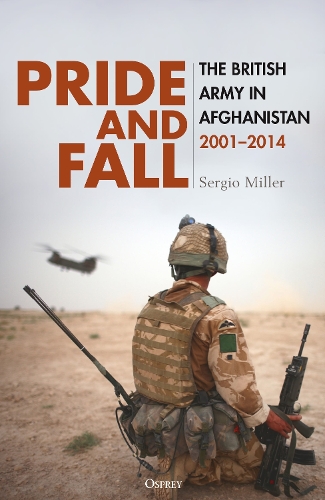
Pride and Fall: The British Army in Afghanistan, 20012014
(Hardback)
Publishing Details
Pride and Fall: The British Army in Afghanistan, 20012014
By (Author) Sergio Miller
Bloomsbury Publishing PLC
Osprey Publishing
4th February 2025
24th October 2024
United Kingdom
Classifications
General
Non Fiction
Battles / military campaigns
Irregular or guerrilla forces and warfare
958.104742
Physical Properties
Hardback
592
Width 160mm, Height 238mm, Spine 52mm
890g
Description
Following the 9/11 attacks, the British Government supported the initial US invasion of Afghanistan in 2001, and also committed Royal Marines to clearance operations in eastern Afghanistan after the invasion itself. Further British forces helped set up the NATO International Security Assistance Force (ISAF) in Kabul from 2002 onwards. However, following the expansion of ISAF southwards Britain was drawn into a lengthy military campaign against a fierce insurgency. In January 2006, British Defence Secretary John Reid announced that British troops would deploy to Helmand Province in southern Afghanistan to support the expansion of ISAF operations there, in March of the same year was quoted as saying we would be perfectly happy to leave in three years and without firing one shot. In reality, the battlegroup from the Parachute Regiment that deployed had fired more than 480,000 shots in addition to cannon fire, mortars, artillery and anti-tank missiles. Sixteen British soldiers had also been lost to enemy action, and conditions had been set that would shape the rest of the British commitment to operations in Afghanistan. From 2006 through to 2014, a succession of brigade-sized task forces rotated through Helmand on six-month tours, with different priorities and ways of operating. When they finally withdrew in 2014, British forces had lost 456 killed and over 2,000 wounded, and the Taliban were resurgent. At the time of Operation Herrick 4, the initial deployment to Helmand Province in the spring of 2006, the author was serving as a Reservist in the Defence Intelligence Staffs in Whitehall, and would continue to do so for the remainder of the war. From this position he had access to a great deal of information about the campaign, but this added as many questions as answers to what eventually became an eight-year operation: What happened Why were the key decisions taken as they were By whom When What were the protagonists thinking at the time Why were British soldiers and marines now dying in a corner of Afghanistan in the first place How did the mission evolve This book seeks to answer those questions. It was drafted as the war happened, with the author collating on a weekly basis the abundant open source material generated by the war. The MOD published weekly news; the British Army published a blog; and almost all serving units published blogs. Frontline newspapers were also published. The sheer richness of this material forms the foundation of the manuscript. This is about the men and women who served, from commanders to soldiers; it is not analysis of counter-insurgency theories or geopolitical rumination.
Author Bio
Sergio Miller is a former British Army Intelligence Corps officer who served in Special Forces. He was deployed to Northern Ireland and undertook assignments in South America and East Asia. In the First Gulf War he served as an intelligence briefer to the UK Joint Commander. Since leaving the regular armed forces he has worked in the defence industry. Sergio continues to support the Reserves and is also the author of the two-part history of the Vietnam War, In Good Faith and No Wider War, published by Osprey, as well as a regular contributor the British Armys house journal British Army Review, and writes regularly for British military blogging site The Wavell Room.
